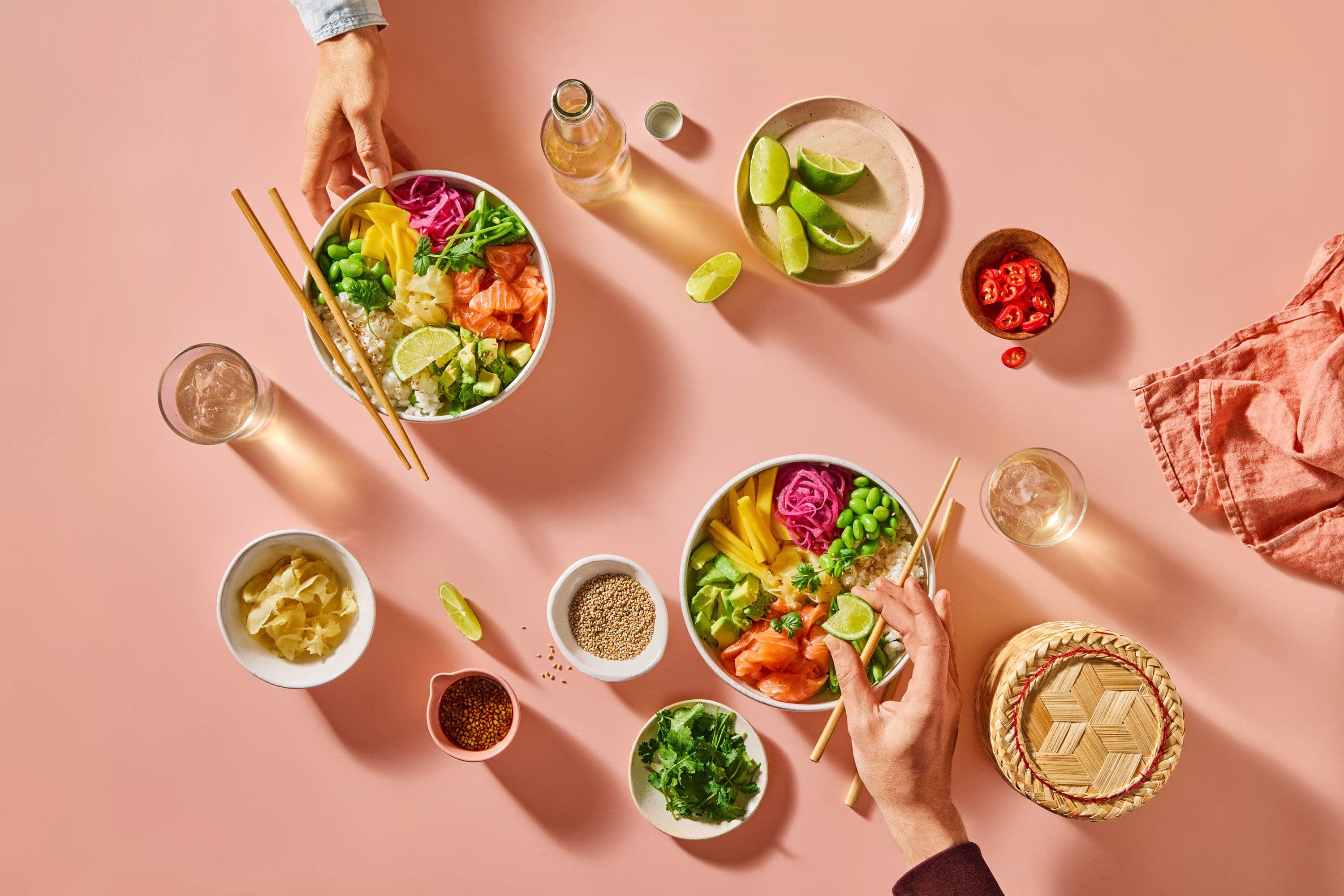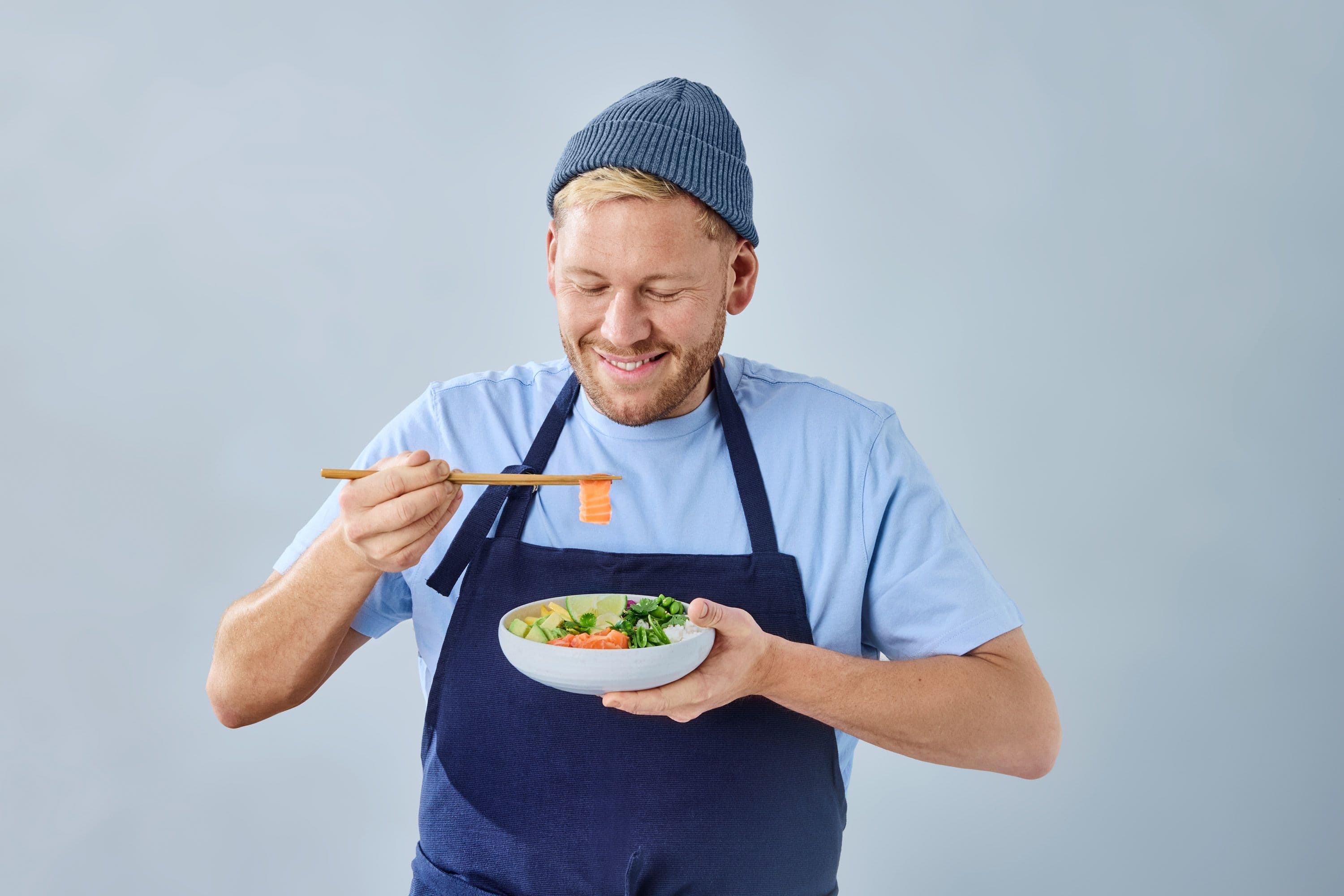
Environmental contaminants
All food products contain trace amounts of environmental contaminants. Dioxins, PCBs, dioxin-like PCBs, and heavy metal have been released into the ocean by human industrial activities for many decades and been transferred with ocean currents towards the north. As such, fatty fish from Northern Europe, which is turned into fish oil, may be a source of such substances in salmon feed. This is not the case for fish oil from South America.
Environmental contaminants in our feed and fish are kept far below the safe limits set by the food safety authorities around the world. In Norway and the UK, the limits on such substances in seafood are set by the European Food Safety Authority (EFSA), based on the best available research. In British Columbia, the limits are set according to the requirements by the destination country of the exported seafood product.
To be on the safe side, and based on the new knowledge from the European Food Safety Authority, Grieg Seafood is now purifying the fish oil based on fisheries from Northern Europe that goes into our feed.
Monitoring programmes of environmental contaminants
EU Directive 96/23 EC requires a monitoring program for undesirable substances in aquaculture products, to ensure that food does not contain residues above legal limits. In Norway, the program is administered by the Food Safety Authority and the Institute of Marine Research. Since the program began in 1998, residue levels have remained significantly below the recommended maximum limits. Read the latest results here.To ensure that our salmon meet rigorous safety standards for human consumption, both feed and fully grown salmon are tested for environmental contaminants. We run our own monitoring program where we include dioxin, PCBs, dioxin-like PCBs and heavy metals.
Ethoxyquin
Ethoxyquin is an antioxidant that can be used as an additive to prevent oxidation and preserve high quality of feed raw materials during transport. Grieg Seafood is no longer using raw materials with added ethoxyquin.
Product safety
All our products are intended for human consumption, and are subject to strict food safety regulations and management practices ensuring that our products are produced, processed, packaged, labelled, and sold with a high level and focus on protection of human health. Our food safety culture focuses on continuously improving and aiming for creating awareness in all levels of our organization. Biological, chemical and physical hazards that may pose a risk to our products, and external threats related to food fraud and food defense, are crucial points of focus. Customers and consumers can trust our products, our approach to food safety, and our food safety management systems.
We maintain strict quality control at every stage of our farming operations to ensure the highest levels of food safety. Products originating from our processing plants have been handled under a competent food safety management system based on Hazard Analysis and Critical Control Point (HACCP) principles. We focus on risk-based thinking to take advantage of opportunities and preventing unwanted results.
Our standard audit program includes yearly internal audits, and yearly external audits covering the scope of the various standards we are certified for, including each site and processing plant.
We investigate, act and report on incidents of non-conformities. System for early warning, notification and recall is activated whenever an unacceptable risk for human health and safety is detected or suspected. Products that are stopped based on suspected food safety non-conformity are not released to the market until retesting or risk-based evaluation are conducted. We have not had any product recalls for the last ten years, nor did we have any in 2023. No serious incidents of food safety non-conformities in regards to requirements in regulations or voluntary codes have been reported in 2023. Our product is not banned from any markets. To manage possible product recalls and serious incidents related to food safety, regular training is performed. Read our product recall procedure here.Group Quality Network
Our GSF Group Quality Network performs a continuous review of hygiene-related challenges at our harvesting plants. Microbiology and safe food production is the main area of focus. We test our salmon for foodborne bacteria according to legislative and customer requirements. Our industry’s main focus is on listeria monocytogenes, a bacterium that can cause illness in humans and in some occasions death for vulnerable groups of the population when food is consumed raw or without proper cooking. Listeria is not naturally occurring in farmed salmon, but commonly found in water sources or in processing equipment where biofilm has been formed. Contamination to the fish might therefore occur by contact of this contamination sources. If Listeria is detected, action plans are activated in the form of extra thorough cleaning or technical measures. Change of equipment, a new set-up or replacement of equipment might also be possible measures. If relevant, customers are informed in case of detection. We trust that our customers have measures in place to manage Listeria as a risk in their production towards a consumer product, even in normal circumstances where Listeria is not detected on the fish (the raw material) or at the harvesting plants. Regular Listeria sampling is also conducted at key points in the processing line and environment to monitor the quality of cleaning and hygiene controls, and thereby keeping the risk of product contamination low.
Traceability
We have a fully integrated traceability system from roe to finished product. Each salmon has a CV with information about origin and production. The information includes details on the relevant fish group, farm and pen where it was grown, broodstock, roe, feed, certifications, vaccinations and medical treatments if relevant. Medical treatments is kept under strict monitoring regarding retention time, ensuring that there are no residues of any medicines in our products. Each fish box has a traceable LOT number. Our operation also controls and keeps adequate records of suppliers, raw materials, ingredients, equipment, and services they supply that may affect food safety in our products.
